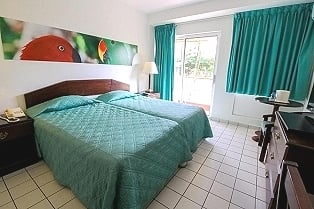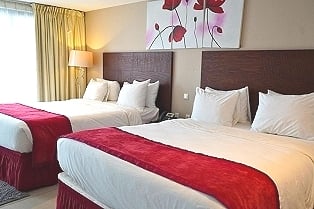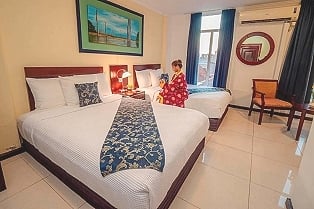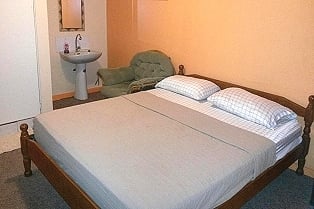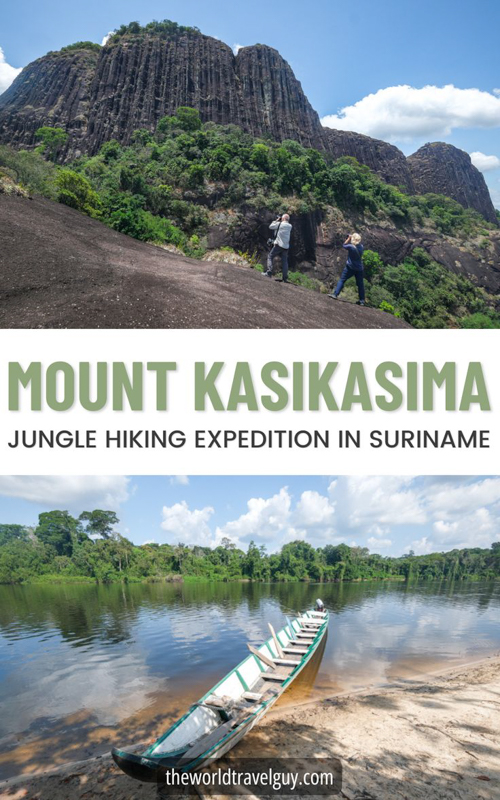I just got back from hiking Mount Kasikasima in Suriname! It’s a fun expedition that involves flying a little bush plane into the jungle, taking a canoe up the river, and climbing one of the middle peaks of the mountain.
Along the way, you get to visit indigenous villages, sleep in hammocks, see wild animals and exotic birds, go swimming and fishing in the creeks, and look out over the Amazon rainforest toward the border of Brazil.
This adventure can be done in either 5 or 8 days, and you’re accompanied by a full crew of Amerindian boatmen, plus a cook and guide to take care of you the whole time. I did the 5 day trip with a small group of European tourists, and we had a great time.
In this blog post, I’ll share my experience from the trip, and I’ll give some travel tips for anyone planning to go!
Where To Stay In Paramaribo
My Recommended Tour Company
I arranged my trip through a local tour company in Suriname called Orange Travel, and I can highly recommend them.
Even though I booked Kasikasima on short notice, they were very accommodating and quick to set everything up. They’re easy to communicate with via WhatsApp, and their reps speak good English.
They also helped arrange transport from my Paramaribo hotel to the local airport for our trip to Kasikasima, and the overall price matched other companies in Suriname.
Orange Travel offers lots of other tours aside from just this one, so if you’re planning a trip to Suriname, check them out!
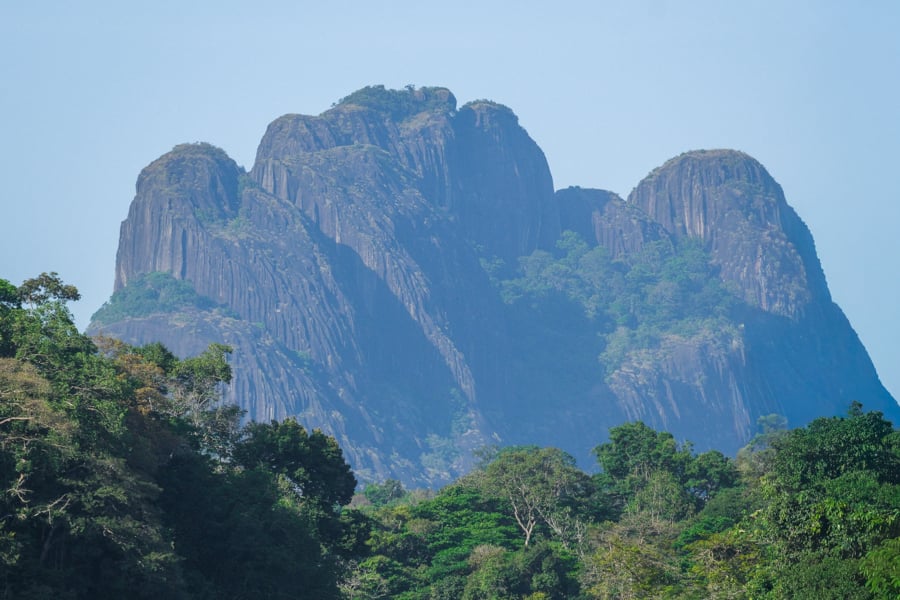
The many peaks of Mount Kasikasima
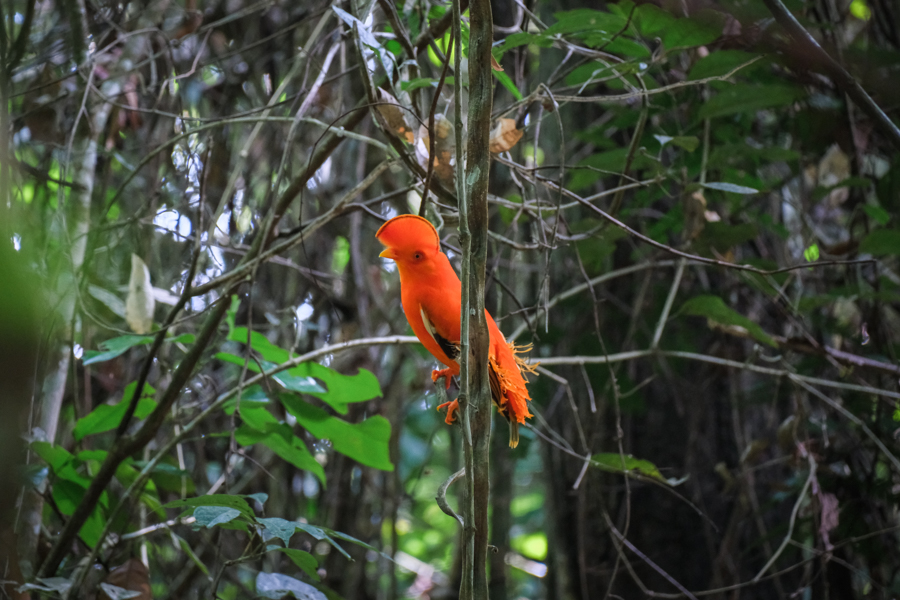
Bright orange cock-of-the-rock bird
The Kasikasima Expedition: What To Expect
• Day 1: Flight To Palumeu
The journey to Kasikasima begins at the Zorg & Hoop airport in Paramaribo, where you’ll meet any fellow travelers joining your group and then you’ll get a short briefing about what to expect on the trip.
My group had a Dutch couple and a Polish couple, plus myself, and we met some other fun travelers during the course of the trip.
After the introductions, you’ll board a little bush plane for a 1 hour flight to Palumeu, an indigenous village with a small airstrip and lodge for tourists.
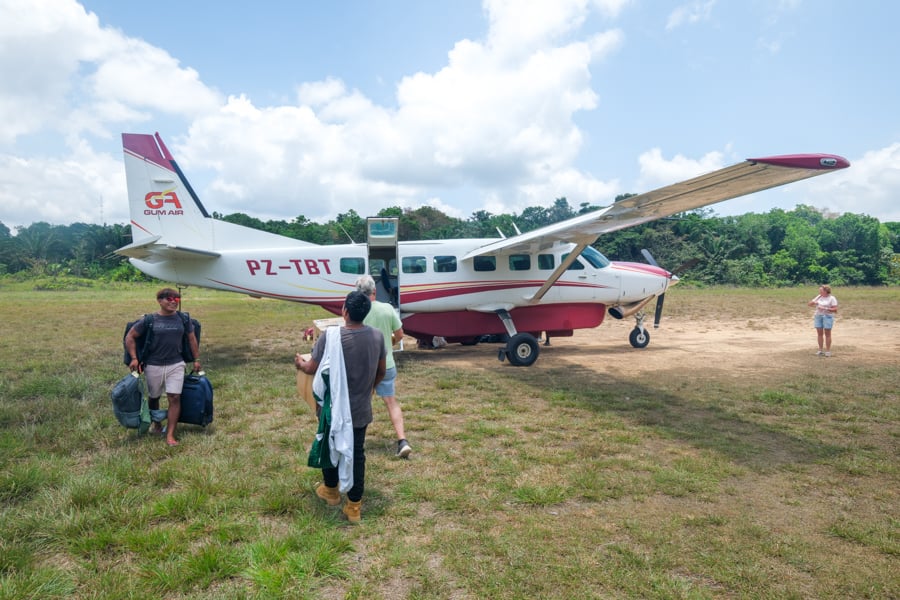
Unloading our plane at the airstrip
The cabins at Palumeu Jungle Lodge are surprisingly clean and comfortable, considering where the place is located.
There are showers and flush toilets, and the bugs are mostly kept at bay thanks to a wire screen around the ceiling.
They don’t have air conditioning, but you usually don’t need it because the jungle cools off pretty well at night.
Each cabin has a balcony with views of the nearby Tapanahony River, and birds visit the lodge every morning. It’s a nice setting.
In the evening, we went on a short walk to the indigenous village, where we had a chance to buy crafts, learn about their school and church activities, and meet some of the local people who would join us as crewmen on the upcoming boat trip.
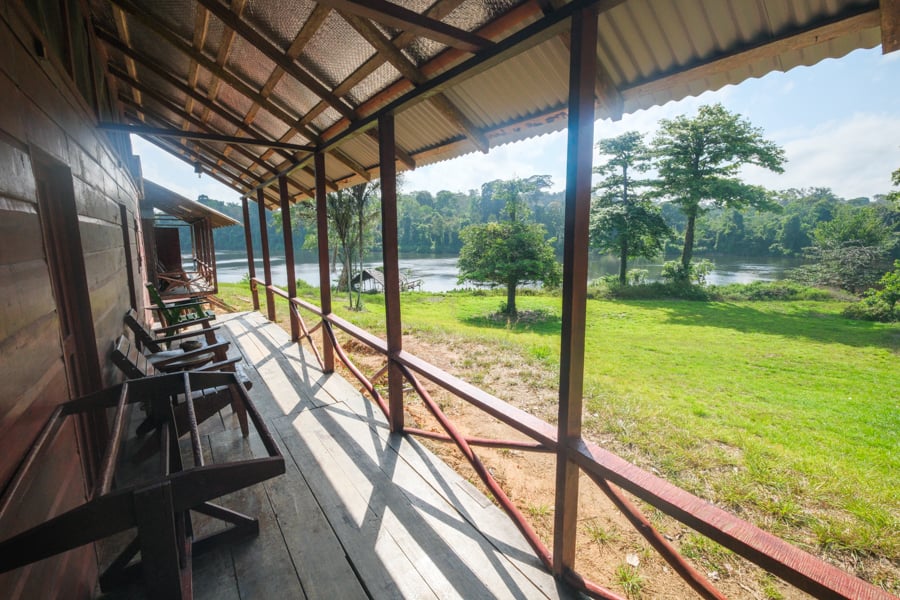
Balcony view at the lodge
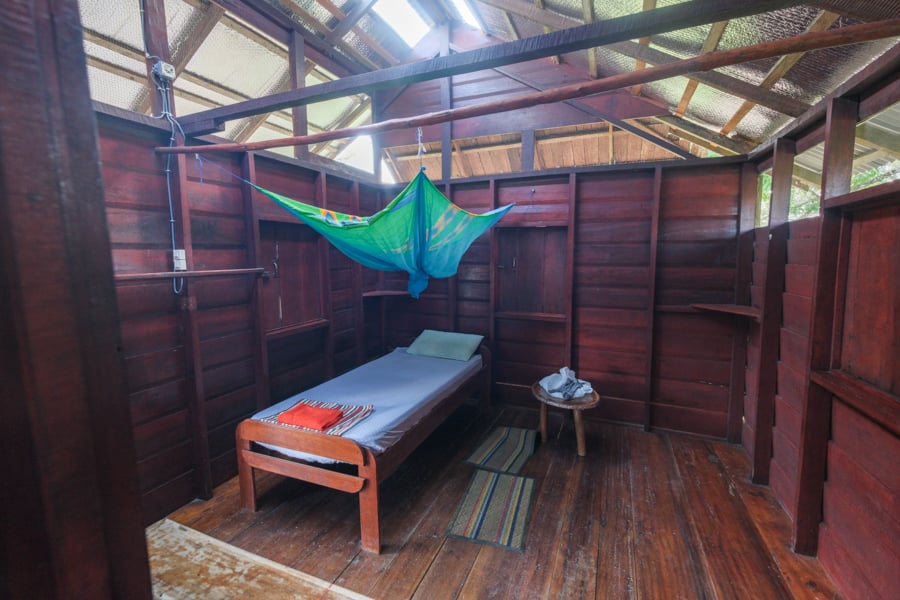
The rooms are basic but comfortable
• Day 2: River Journey To Kasikasima
The second day of the trip is a long one. You’ll spend most of the time sitting on a motorized canoe as you travel up the river to a jungle camp that’s within hiking distance of Mount Kasikasima.
Along the way, you’ll have plenty of opportunities to hop into the river and swim, which is a wonderful way to cool down and relax. The swimming was actually one of my favorite parts of the whole trip.
You also have a good chance of seeing animals from the boat. We saw otters, wild pigs, spider monkeys, toucans, and lots of macaws. On rare occasions, you might even see a tapir or jaguar if you’re lucky.
It’s kind of hard to take pictures of animals from the moving boat, but our guides were considerate in stopping for us every time we spotted something we wanted to photograph.
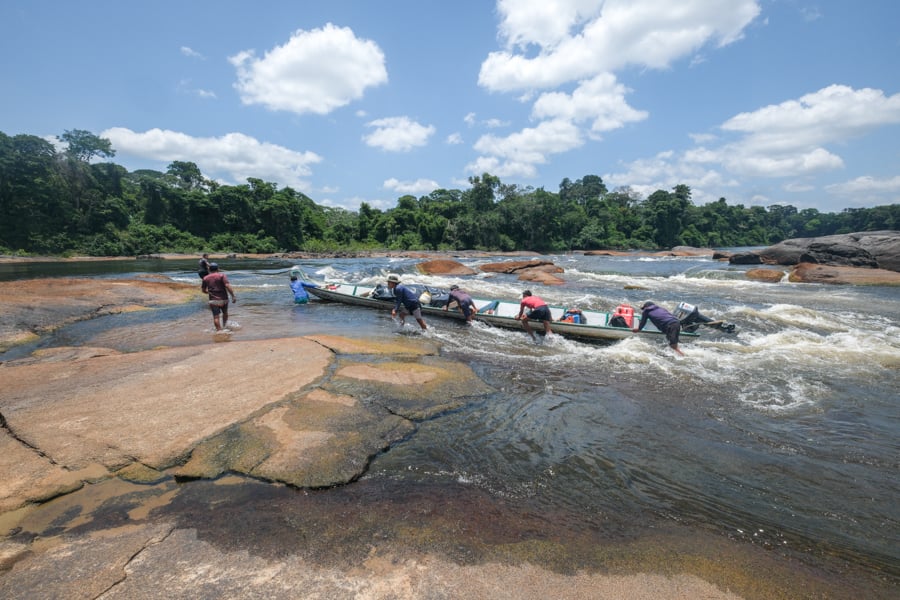
Dragging our canoe over the river rapids
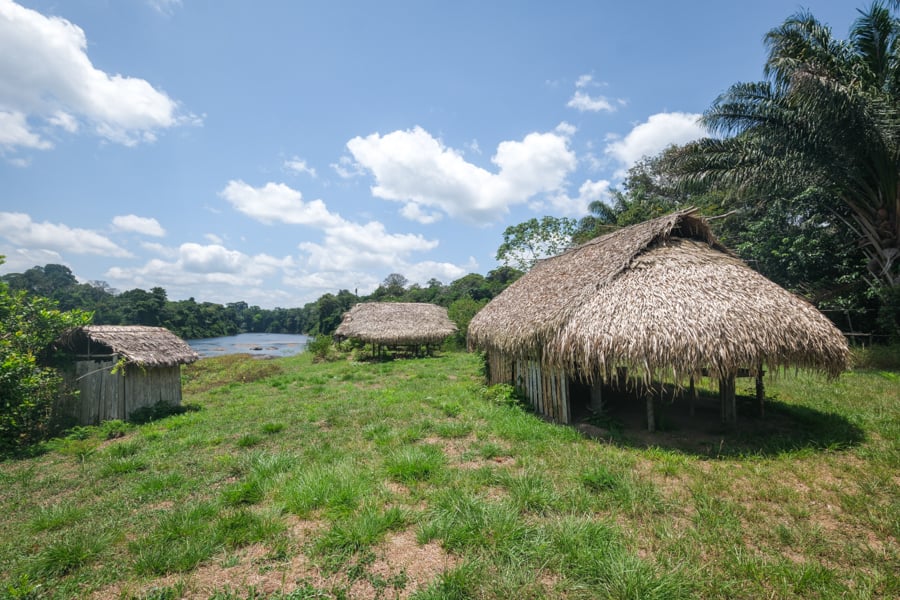
Thatch huts at our lunch spot
We left Palumeu at 10:30 AM and didn’t arrive at the base camp until 6:30 PM, when it was already getting dark.
The base camp near Kasikasima is very primitive. It doesn’t have much except a roof to hang your hammock under, plus an eating table and a small wooden outhouse with a ‘bucket flush’ toilet.
The good news is that it’s right on the edge of the river and has a nice white sand beach, so you can swim and bathe there before and after the hike. It’s also far from any light pollution, so the stars shine bright at night.
After eating a quick supper with the light of our headlamps, we crawled into our hammocks in preparation for the following day’s hike, falling asleep to the sound of howler monkeys in the distance.
The hammocks are a little awkward at first, but all of us slept well once we got used to them. You’ll be tired from the long trip, so even a hammock feels nice at the end of the day.
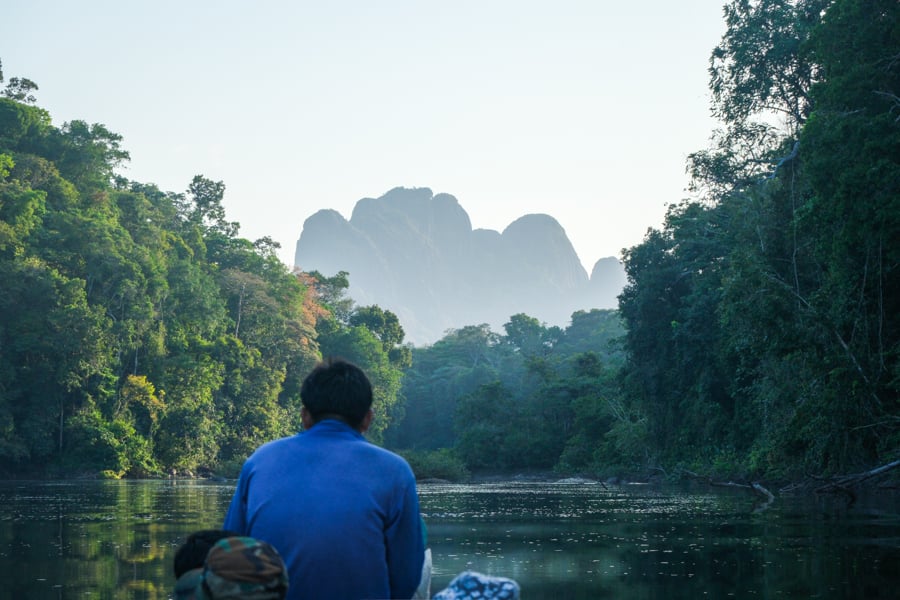
First view of Mount Kasikasima
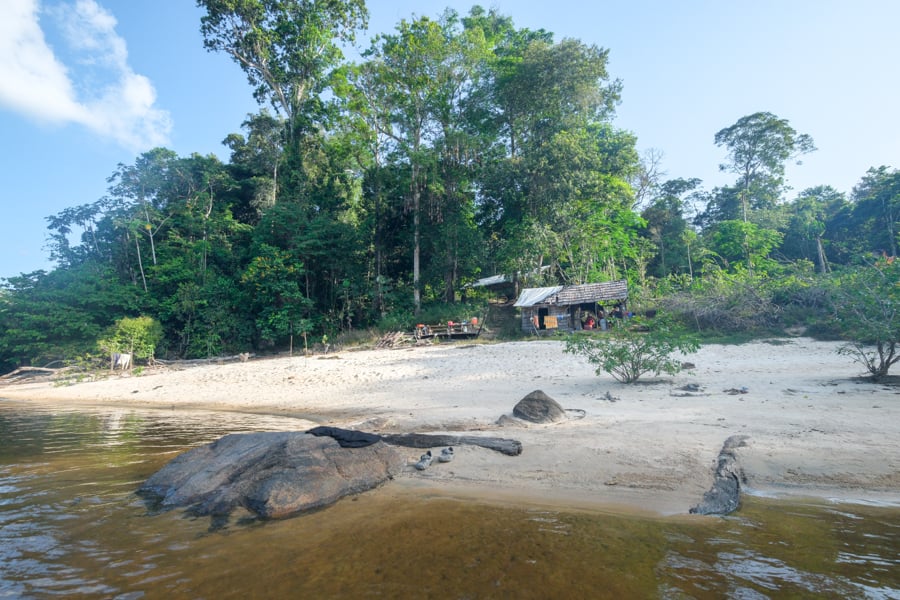
River camp
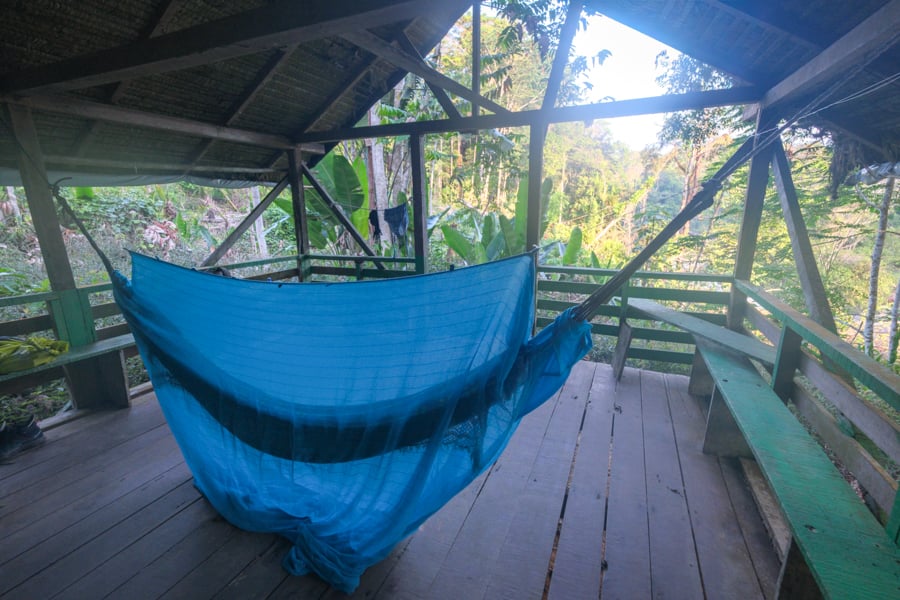
The hammocks are better than they look
• Day 3: Hiking Mount Kasikasima
The third day of the trip is spent hiking to Mount Kasikasima from the river camp. It takes all day to go there and back.
We woke up at 8 AM for a quick breakfast, and then started hiking at 9 AM. We skipped lunch on this day except for some boiled eggs we brought in our packs.
Kasikasima is a pretty legit hike with thick jungle, thorns and mud, aggressive horseflies and other bugs, and intense humidity making every step harder.
However, if you’re determined, you can do it. We had people in our group who were between 60-70 years old and they were able to finish the hike, but they were in good shape and it was still quite tough.
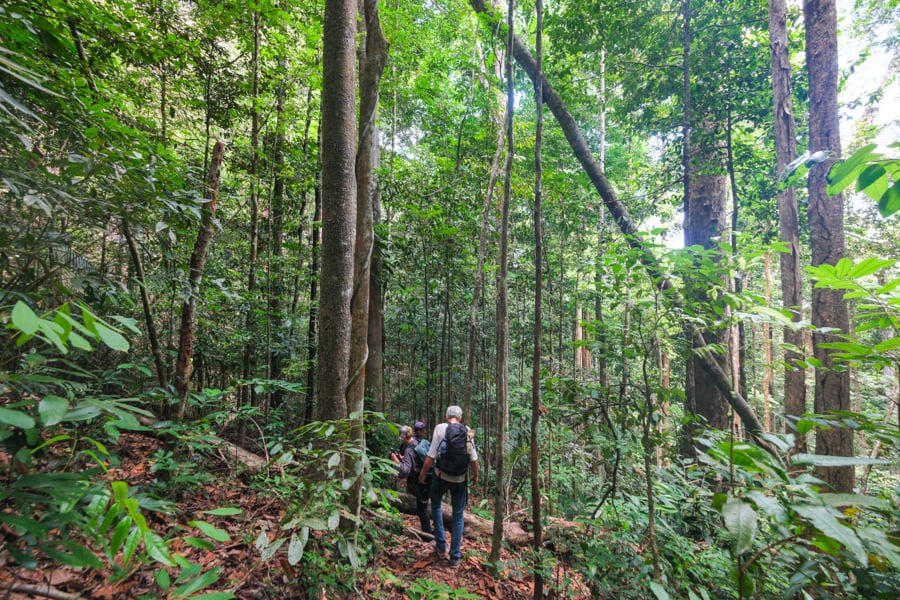
In the jungle
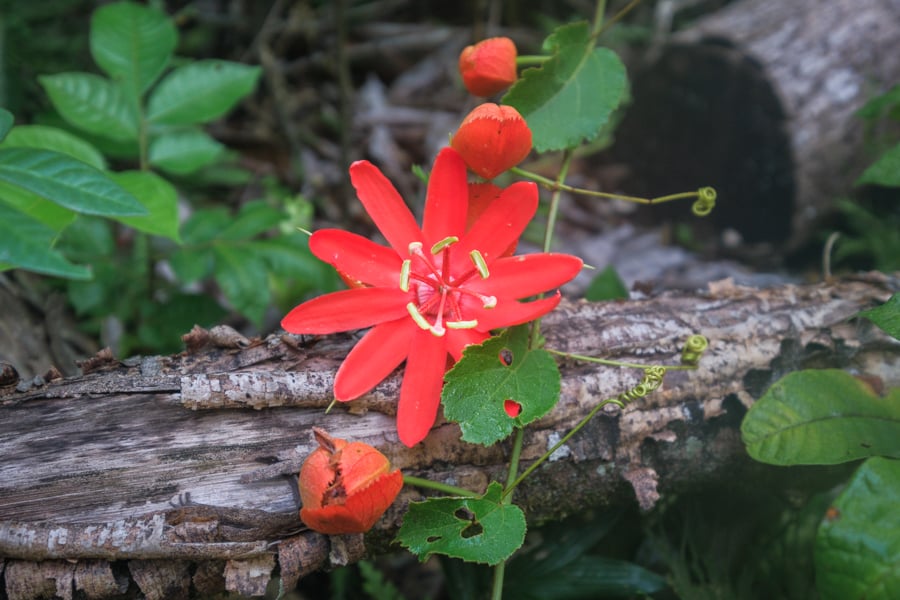
Red flower
After 1.5 hours of hiking, we had our first view of Mount Kasikasima through the trees. It’s an impressive granite rock formation with several giant peaks.
One thing to know is that you won’t be climbing to the top of the mountain, because it’s too steep and technical. No one’s ever reached the summit of Kasikasima before; not even the locals!
Instead, you’ll be hiking to one of the middle peaks that’s flatter and more tame. Don’t worry though, it’s still a good challenge!
At the base of the mountain, there’s a group of giant boulders that serves as a natural habitat for the rare cock-of-the-rock birds. We saw at least a dozen of these birds, and their bright orange colors are amazing.
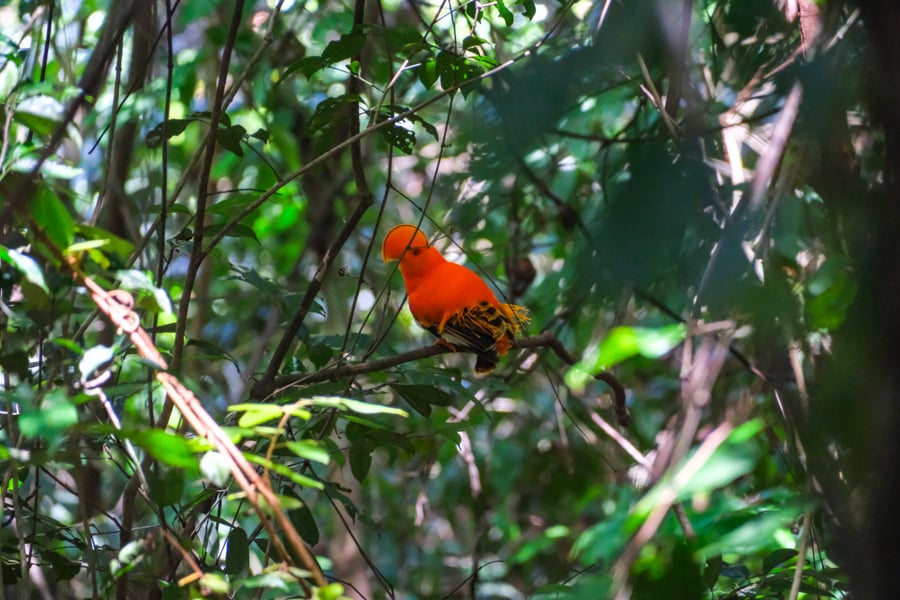
Cock-of-the-rock bird
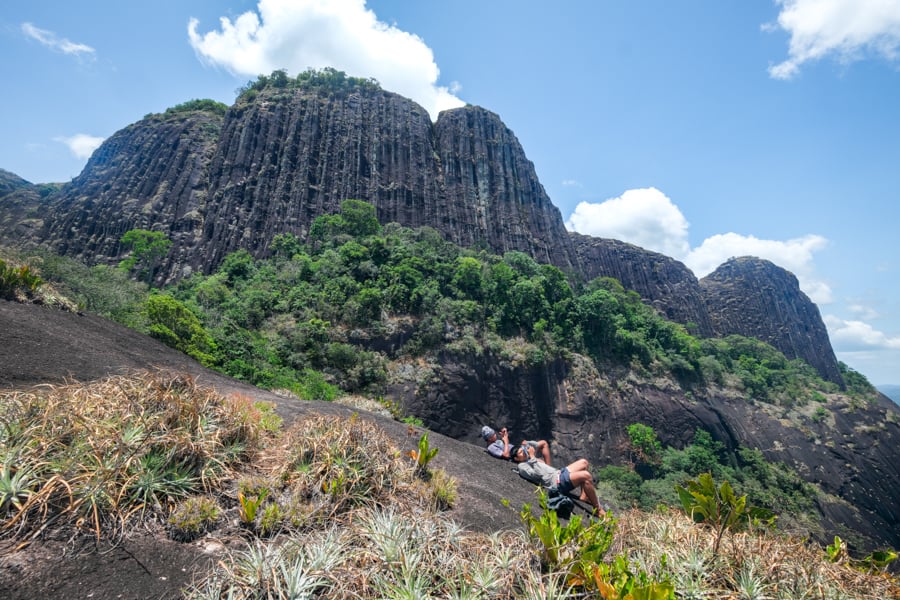
Resting on the mountain
Reaching the middle peak of Mount Kasikasima took us more than 3 hours, and going back to camp was slightly shorter.
We spent an hour on the mountain resting and enjoying the views. You can look out over the untouched green canopy of the Amazon rainforest, all the way to the border of Brazil.
It’s a great view! We had a strong breeze at the top and that also felt nice after hiking through the jungle.
Going back is definitely easier, but there’s a lot of awkward footing, so watch your step.
Quick Stats*
- Distance: 11 kilometers (6.8 mi)
- Elevation Gain: ~800 meters (~2,625 ft)
- Duration: 5 – 9 hours
- Difficulty: Moderate / Hard
*These are roundtrip stats for the hike when starting from the river camp
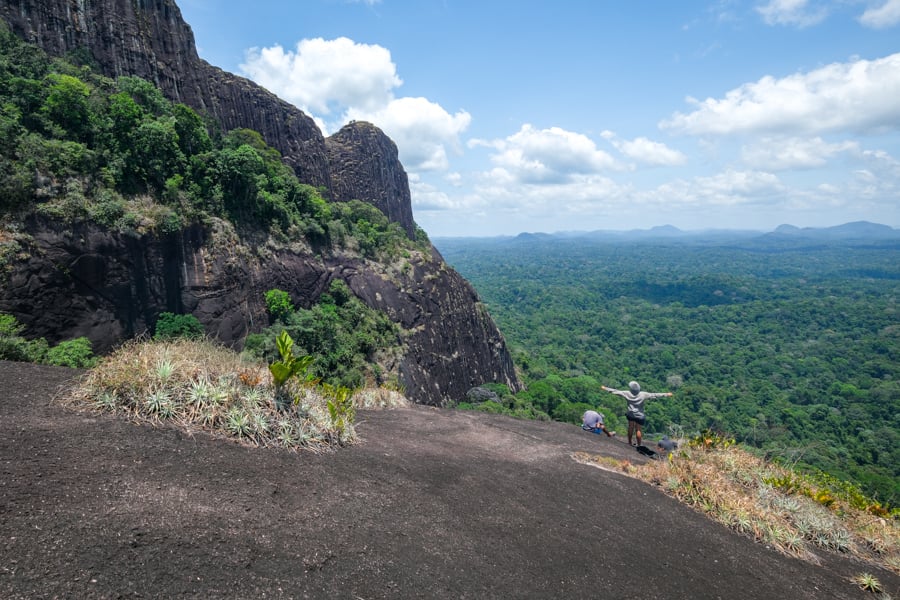
Views for miles
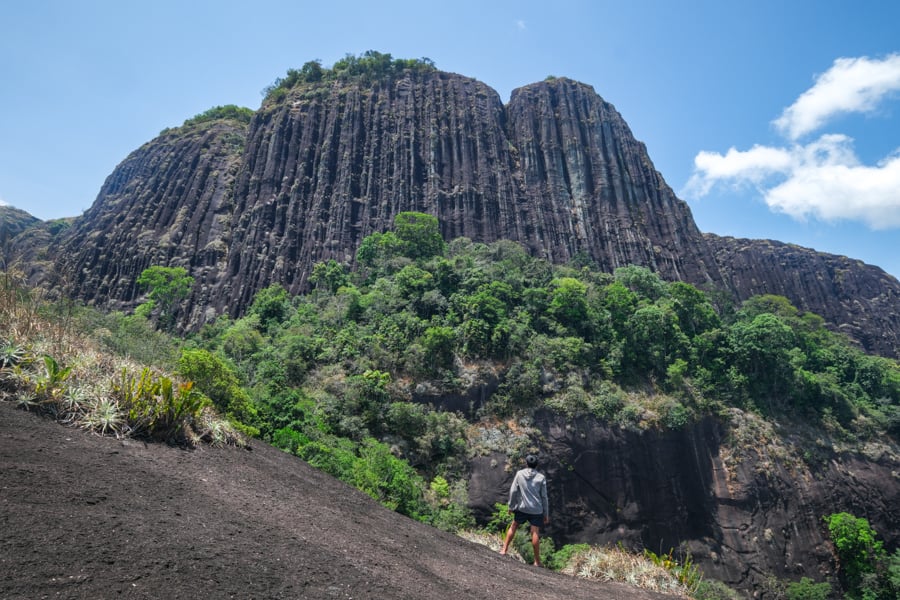
Impressive mountain
• Day 4: River Journey Back To Palumeu
The fourth day of the trip is mostly spent on the boat again, as you travel down the river back to Palumeu village.
Going back is slightly quicker because it’s all downstream. We didn’t swim as much this time, partly because we were already sunburned.
Around lunch time, we stopped at a small fork in the river so our Amerindian boatmen could try to catch the giant anjumara fish.
They caught almost a dozen fish, including a few really big ones! We got to pose for some pictures with them and pretend it was our catch. 🙂
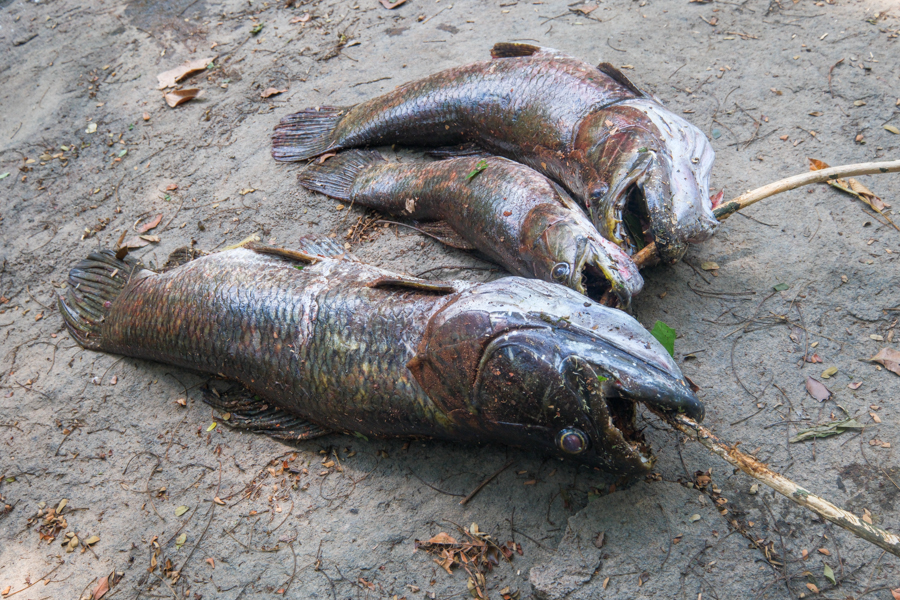
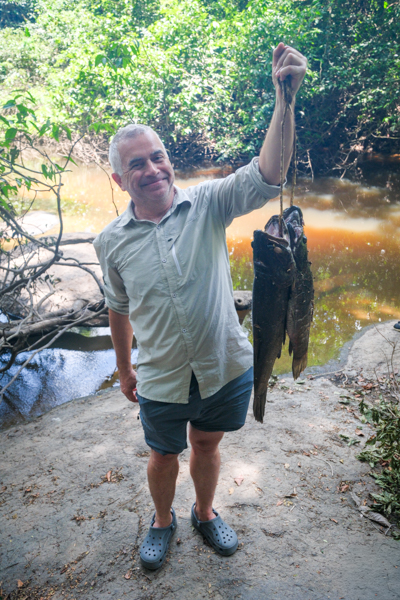
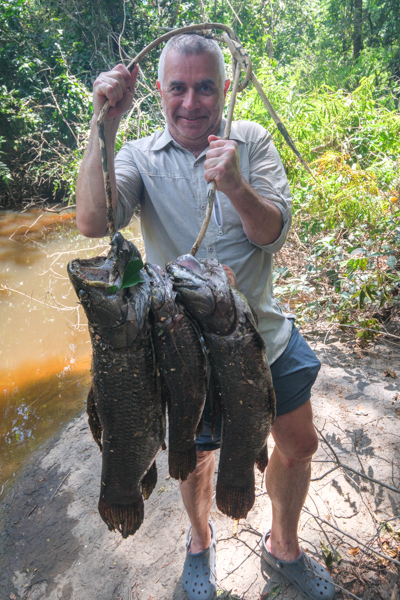
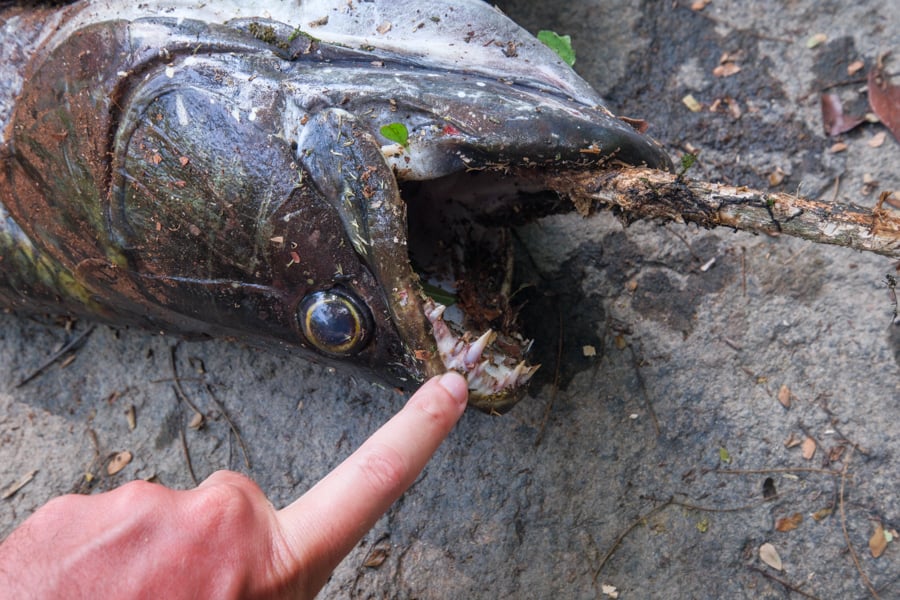
Sharp teeth on the anjumara
Even though these fish went to the indigenous village and not our dinner plates, it was fun to see them being caught by the boatmen.
We arrived back at Palumeu at around 4:30 PM, giving us some time to rest and walk around before supper that night.
Our last night was spent in the lodge again, which I will admit felt like luxury after staying two nights in the jungle hammocks.
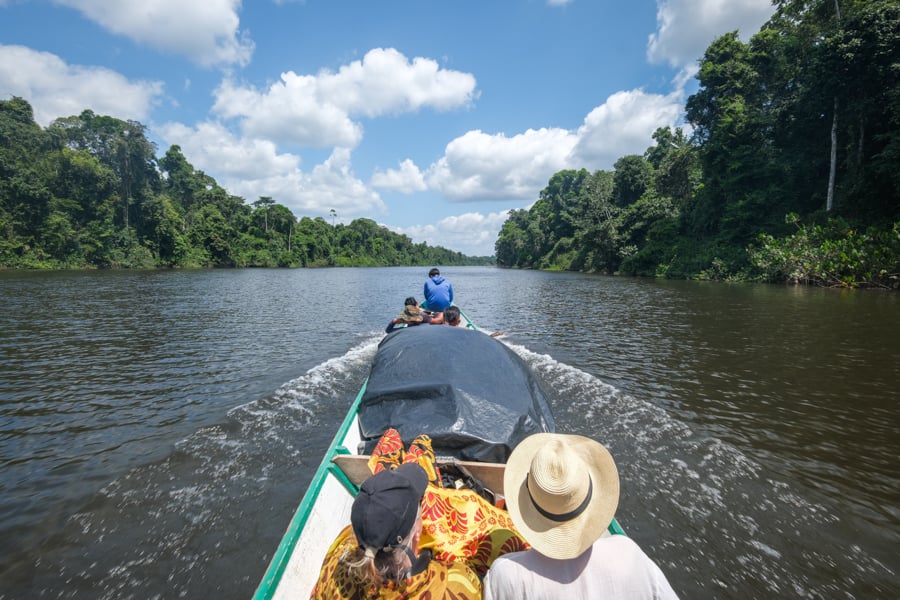
Boat ride on the river
• Day 5: Flight Back To Paramaribo
For our last morning in Palumeu, we had the option to visit the indigenous village again, but I decided to rest at the lodge and watch for animals.
We had breakfast and lunch at Palumeu, and then the plane picked us up around noon to take us back to Paramaribo, where we said our goodbyes and went our separate ways.
It was a fun expedition and all of us enjoyed it!
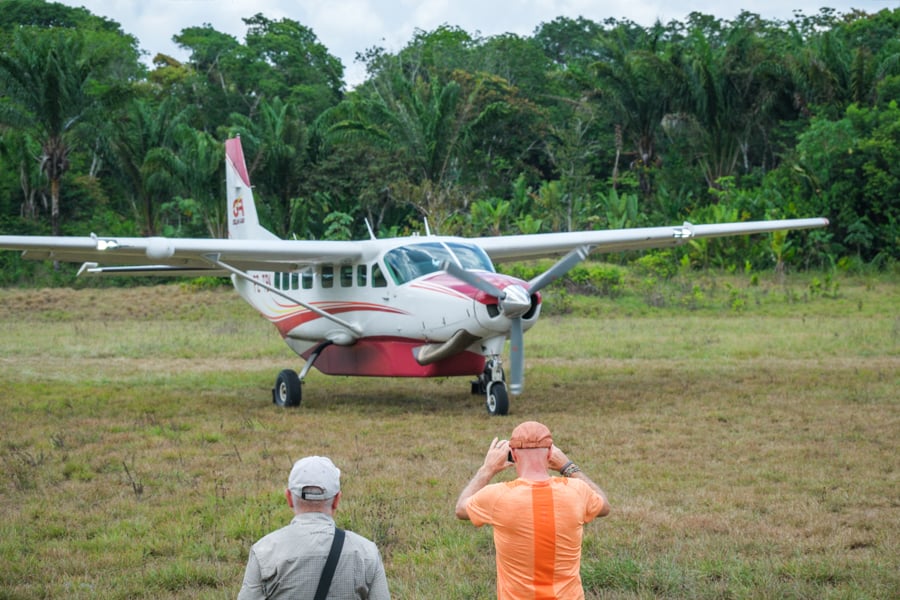
The plane coming to pick us up again
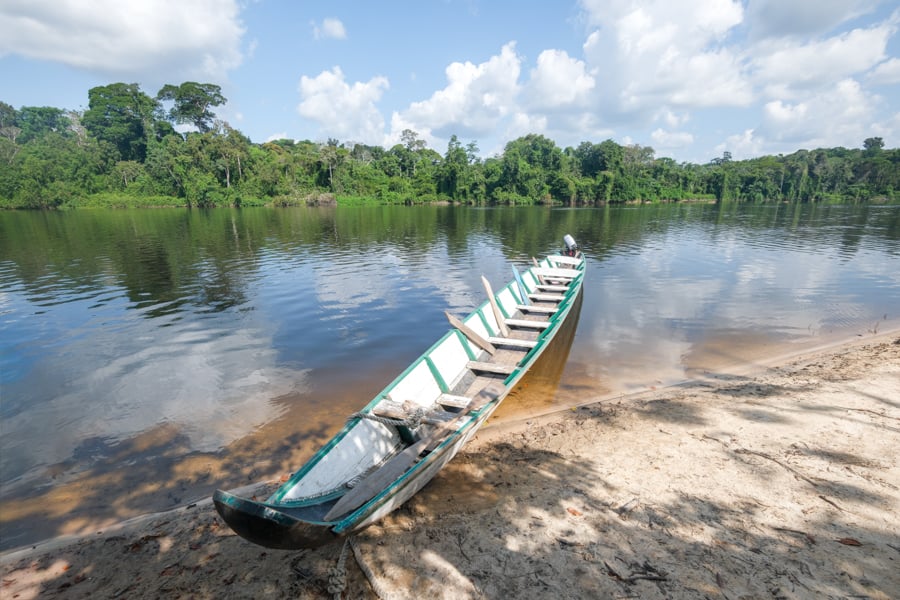
River bank near the lodge
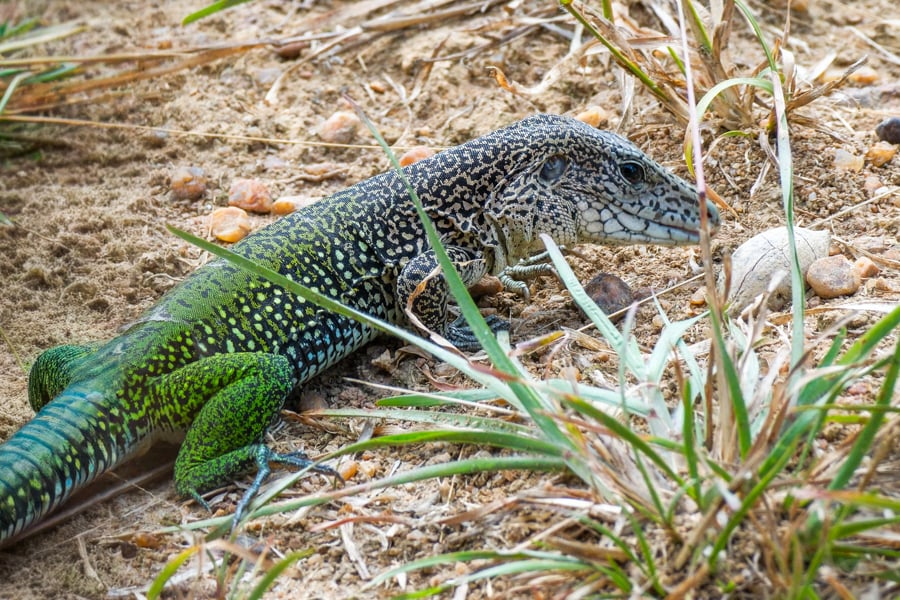
A lizard I photographed on the last day
Packing List
You’ll want to double check with your tour company about what to bring on the trip, but here are some of the most important things:
- Hat. You’ll get absolutely roasted on the boat ride if you don’t bring a hat that covers your face. Bring the best one you have!
- Sunscreen. Same as above, bring sunscreen to protect your skin, especially on the boat ride.
- Swimwear. One of the best parts of this trip is swimming in the river, so you don’t want to miss that.
- Power Bank. This is handy for charging electronics. You won’t have any electricity at the river camp, and charging opportunities are pretty limited even at Palumeu.
- Waterproof Bag. The boat gets splashed sometimes when you’re cruising through the rapids, so a bag is important to keep your electronics safe. At the very least, you should have a waterproof cover like this one to protect your bag from the rain.
- Headlight. You won’t be hiking at night, but a light is still handy for walking around in the camp after dark. I like this headlight from Bushnell or this one from Streamlight.
- Bug Spray. It’s a must. There are lots of biting bugs in the jungle.
- Sandals. These are good when you’re on the boat and walking around at the camps. The only time you’ll actually need shoes is for hiking to Kasikasima on the third day.
- Snacks. The meals we had at Palumeu were great, but the meals at the river camp were scanty. That’s to be expected, of course. I think it’s a good idea to bring some snacks to supplement the meals, especially when you’re hiking. I brought beef jerky and electrolyte packs from the U.S. for this purpose.
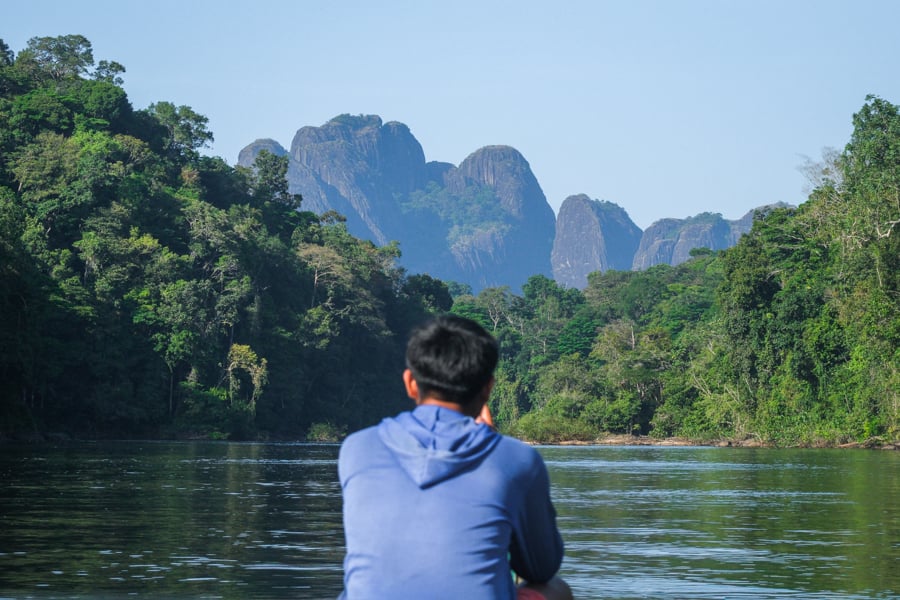
River view of Mount Kasikasima
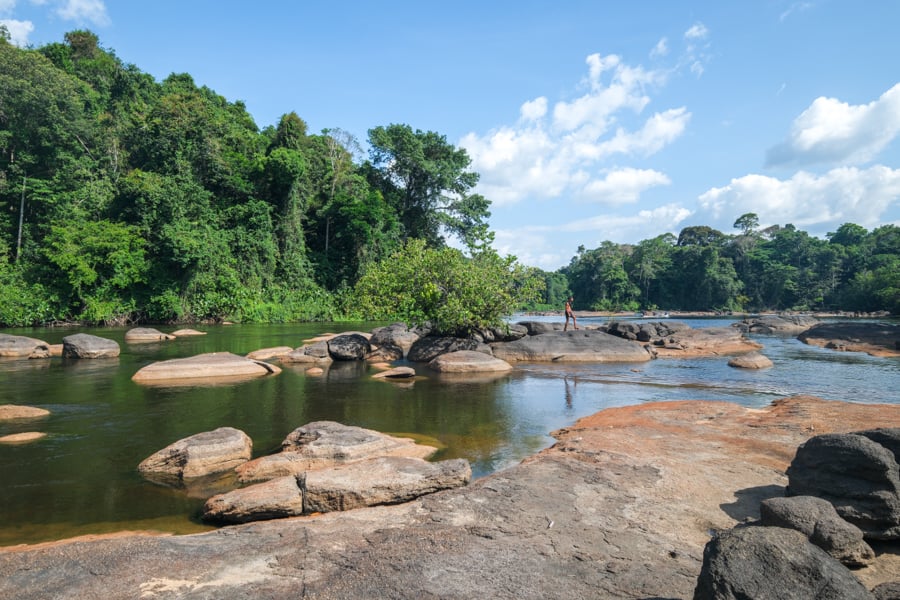
Smooth rocks along the river
Other Tips For Kasikasima
- Cell Service. There’s some phone reception at Palumeu, but none after that, so you’ll want to send any important messages before you go.
- Ticks. I didn’t see it mentioned anywhere online, but there are ticks at Kasikasima. I brushed off several during the hike. Make sure you check your legs for them during and after the hike, because ticks can carry some nasty diseases.
- Mosquitoes. I barely saw any mosquitoes on this trip, but your experience may vary, especially if you go when it’s wetter. The good news is that you’ll be sleeping inside of mosquito nets for the entire trip; even the hammocks have nice nets around them! I never got a single bite.
- Malaria: Suriname was certified malaria-free by the WHO in June 2025. New cases could pop up from time to time, so I’d still be careful to avoid mosquito bites, but it’s not a major concern. I didn’t take malaria pills for this trip.
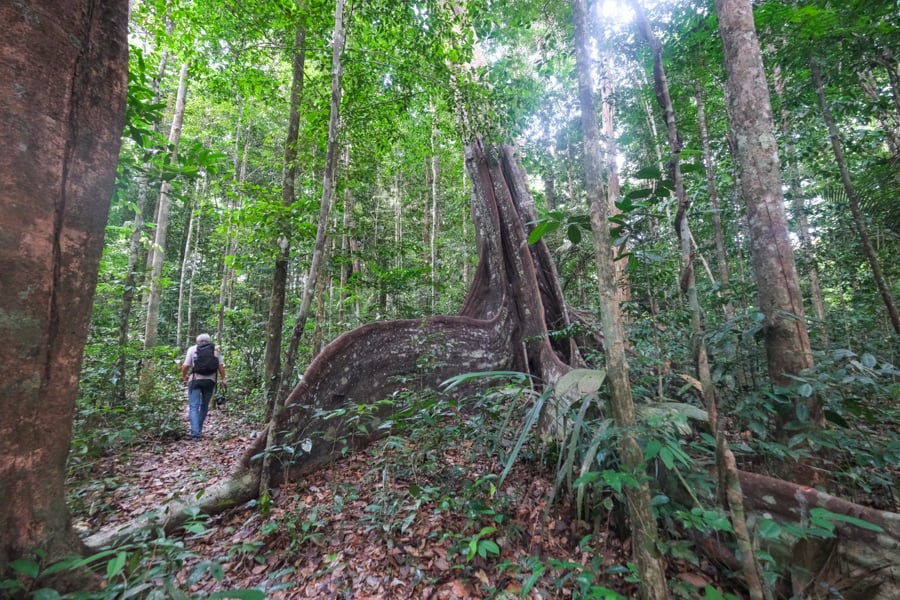
Giant tree roots
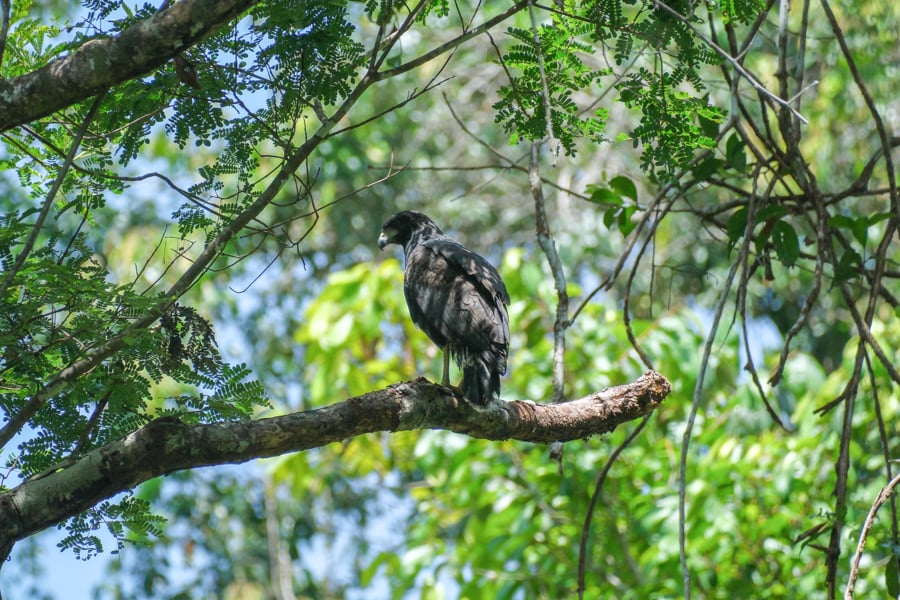
Eagle watching us from the trees
Best Time To Visit
The best time to visit Kasikasima is at the start of Suriname’s dry season, which runs from August to February. I went in September and that was great. August should be perfect in my opinion.
If you go later in the dry season, it may get a bit more challenging to travel up and down the river because of low water levels, because that forces the crew to get out of the canoe and drag it through the dry spots.
You can still go to Kasikasima in the rainy season, but the hiking trail will be more muddy and you have a higher chance of running into bad weather or mosquitoes.
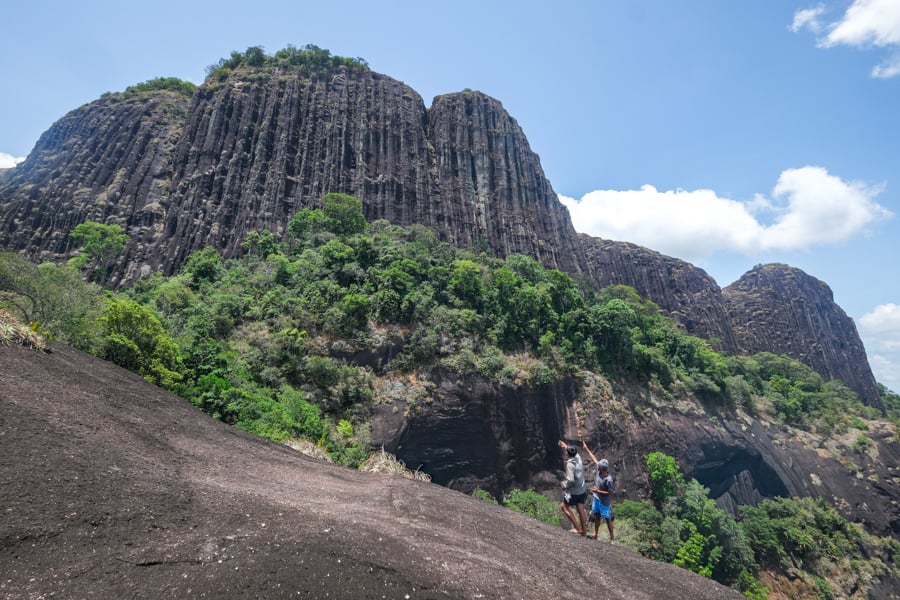
Mount Kasikasima
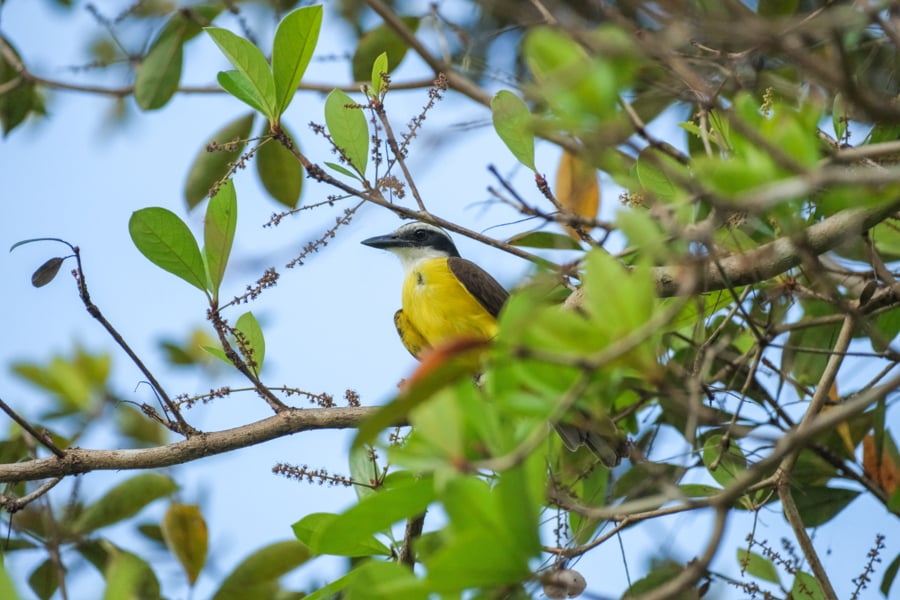
Yellow bird in a tree near the lodge
Is It Worth It?
The Kasikasima expedition isn’t cheap. As of 2025, it costs almost $1,000 USD per person.
Luckily, that price tag includes almost everything you need for the trip: flights, boats, lodges, hammocks, meals, drinks, and a guided tour of the area. It’s a pretty decent value.
I will say, the long boat rides are kind of boring, and the seating on the canoes could be more comfortable. You’re basically sitting on hard wood all day while roasting in the sun.
The first day at the Palumeu lodge felt a bit slow and unnecessary as well.
I would’ve been okay with flying to Palumeu early in the morning and then taking the boat to the river camp on the first day, skipping an entire day at Palumeu and completing the trip in 4 days instead of 5.
People who love slow travel will disagree with me on that, and may even prefer the 8 day option. I think that would be too slow for my tastes.
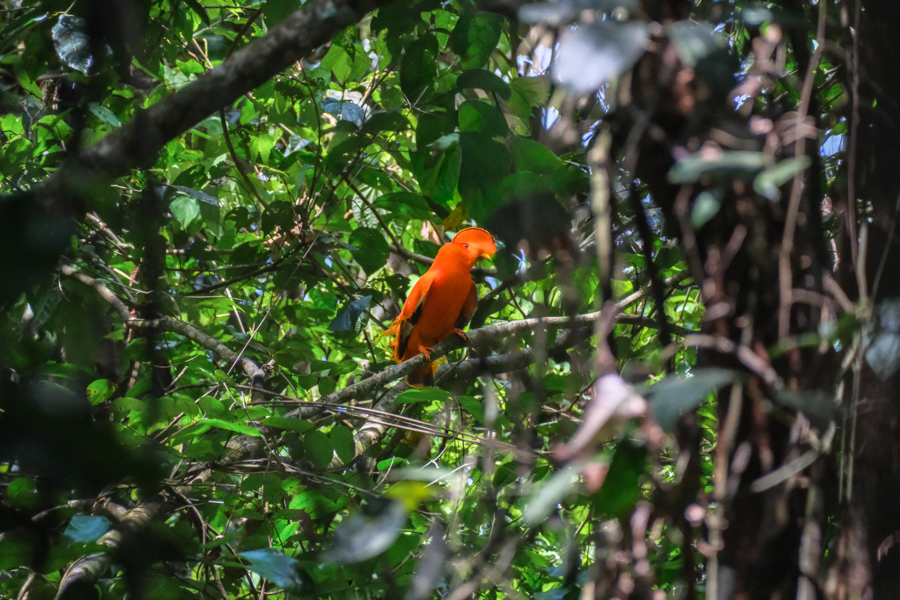
These colorful orange birds were one of the highlights of the trip
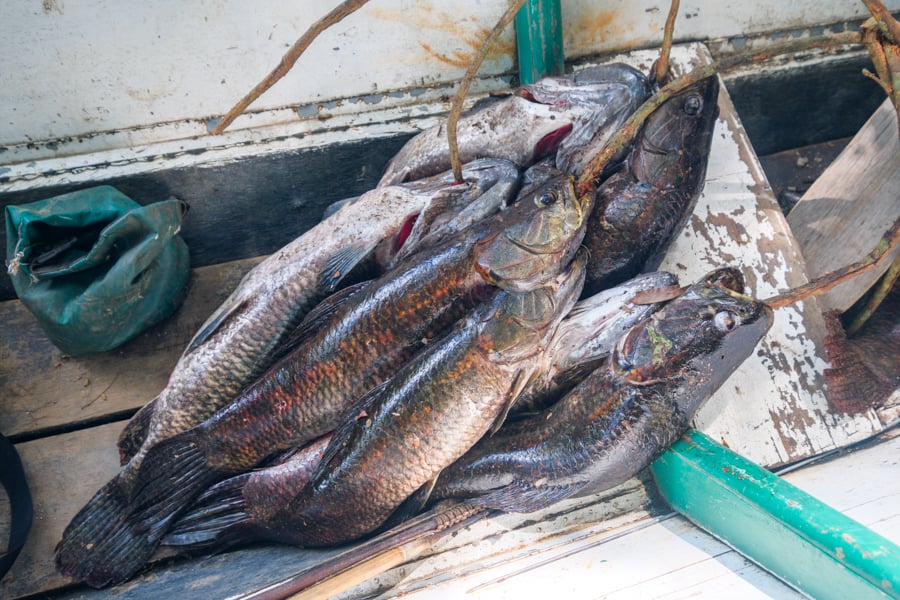
Our anjumara catch in the boat
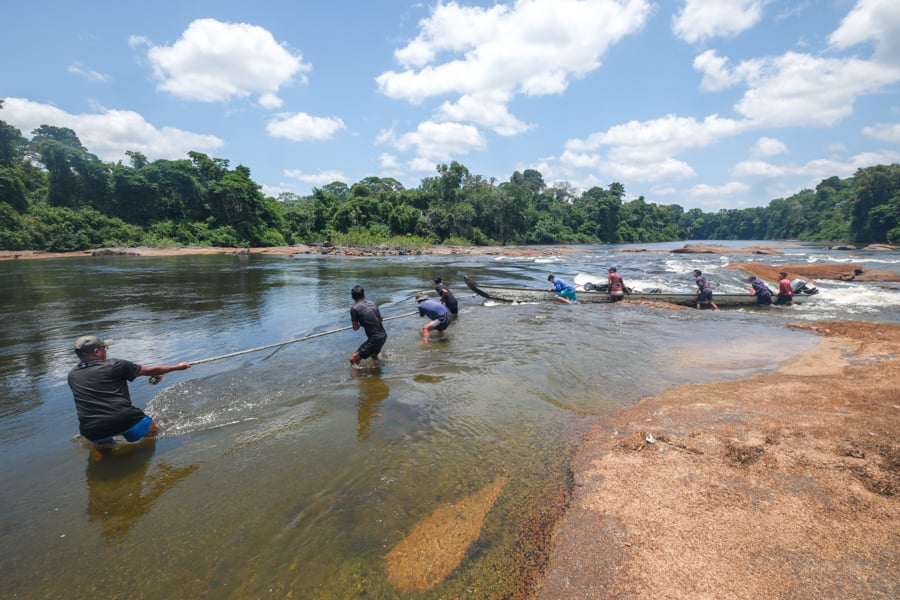
Dragging our canoe over the river rapids
So is Kasikasima worth it? I think there is some room for improvement, but it was a fun trip and I enjoyed it. I don’t have any major gripes.
Ultimately, whether it’s ‘worth it’ or not will depend on your budget and your own personal interests, but if you’re looking for a fun jungle expedition that takes you off the beaten path, I think it’s a great choice.
This corner of Suriname is definitely not a touristy part of the world, and it’s full of nice nature!
Paramaribo Hotels
More South America Travel Guides
Thanks for looking! I hope you enjoyed reading about my experience at Mount Kasikasima in Suriname.
Don’t forget to check out my other travel guides for South America before you go!
